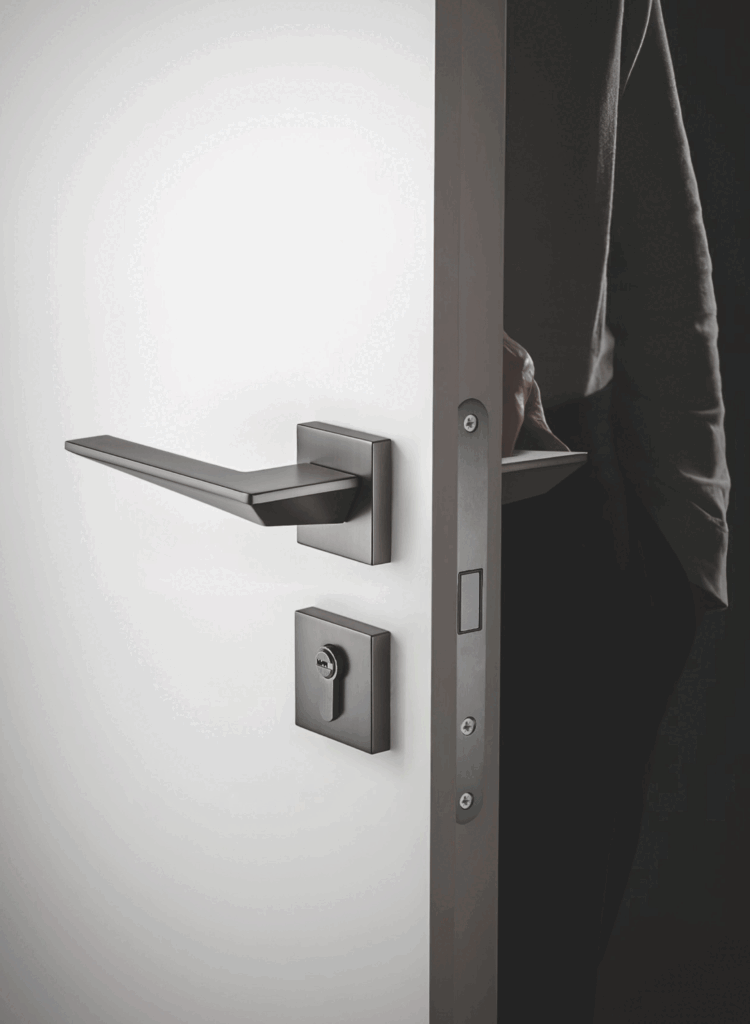Do More Pins in a Cylinder Make It More Secure? When it comes to lock security, many people assume that the more pins in a lock cylinder, the safer the lock will be. While it’s true that the number of pins affects the complexity of the key, it’s important to understand that security is not determined by the number of pins alone. In this article, we will dive deep into how lock cylinder pins work, what factors truly influence lock security, and why a higher pin count isn’t always the answer to a more secure lock.
What Are Lock Cylinder Pins?
A lock cylinder is the core part of a lock that contains pins designed to work with the key. These pins play a crucial role in either enabling or blocking the rotation of the lock. Each pin within the cylinder varies in length, and the cuts on the key are made to match these specific pin lengths. When the key is inserted, the pins align with the cuts, allowing the cylinder to turn and the lock to open.
Lock cylinders are a key part of the products I deal with, such as mechanical locks and door handles, which provide security for various types of buildings, from residential properties to commercial facilities.

Lock Cylinder Security Ratings
Before delving into the impact of pin count, it’s important to understand how locks are rated in terms of security. Security ratings are essential for knowing which locks are suitable for different applications, whether it’s for residential doors, commercial properties, or high-security installations.
The security level of a lock cylinder is determined by its resistance to different types of attacks, such as picking, bumping, and drilling. Below is a comparison of lock security ratings based on common standards:
| Security Rating | Description | Applications |
|---|---|---|
| Grade 1 | Highest security; resistant to physical force and tampering. | Commercial facilities, high-security areas. |
| Grade 2 | Medium security; offers a higher resistance to picking but may not resist force as well as Grade 1. | Residential buildings, offices, schools. |
| Grade 3 | Basic security; typically resistant to basic picking but may fail under physical attack. | Basic residential use, budget-friendly solutions. |
This rating system ensures that businesses, building managers, and homeowners can choose the right level of security for their needs. However, the security rating alone doesn’t tell the whole story—especially when it comes to the number of pins.
How Does the Number of Pins Affect Lock Security?
The number of pins in a lock cylinder does influence its security, but perhaps not in the way you’d think. With more pins, the number of potential key combinations increases, which theoretically makes it more difficult for an intruder to pick the lock. However, this is only one aspect of lock security.
In practical terms, a lock with more pins may offer more combinations, but it does not necessarily mean the lock is more resistant to picking or other forms of tampering. Other factors such as pin material, lock design, and additional anti-pick technologies are just as important.
Here’s a breakdown of how the number of pins can impact lock functionality:
- Increased Key Combinations: More pins mean more unique combinations, which increases the complexity of the key.
- Resistance to Picking: The addition of more pins can make it harder for a pick to manipulate the pins correctly, particularly if the lock incorporates high-quality, anti-pick features such as spool pins or ball bearings.
- Ease of Manufacturing: Locks with more pins require more precision during manufacturing, and cheaper models with more pins may still be vulnerable to tampering.
However, it’s important to note that locks with more pins can still be vulnerable to lock bumping, a technique where an intruder uses a specially crafted key to align the pins. Locks equipped with additional security features, such as anti-bumping mechanisms or digital systems like keyless entry or smart locks, provide much stronger protection than traditional pin-based locks alone.
Does More Pins Always Equal More Security?
The short answer is no, more pins do not always result in a more secure lock. While the additional pins provide more combinations, the security of a lock depends on several other factors:
- Pin Quality: The effectiveness of a lock’s security relies heavily on the quality of its pins. Pins made from durable, high-grade materials and designed to resist picking are far more effective at enhancing security than simply increasing the pin count.
- Lock Design: A lock’s design also plays a crucial role in its security. Locks that feature anti-pick pins, such as spool or mushroom pins, or include additional security features like deadbolts, electronic systems, or reinforced steel construction, offer superior protection—regardless of how many pins are in the cylinder.
- Certification Standards: A lock that meets official standards for anti-picking, resistance to physical attack, and durability (such as those certified by ANSI or BSI) offers a higher level of security than an untested lock with more pins.
For example, door closers and high-security door handles often provide additional physical security by preventing forced entry even if the lock is compromised. These products can make a substantial difference when used in conjunction with a quality locking mechanism.
Conclusion: Pin Count Is Only One Factor
In conclusion, while the number of pins in a lock cylinder does influence security, it is not the only factor that determines a lock’s effectiveness. The overall security of a lock depends on the design, materials, additional features, and the specific threats it’s meant to resist.
For businesses and individuals looking to enhance their security, it’s important to consider all aspects of lock design and security standards. Whether you’re investing in mechanical locks, high-security door handles, or advanced lock systems, ensure that the product meets your needs in terms of both protection and convenience.
Remember, true security comes from a combination of factors, not just more pins in a cylinder.
Share This Story, Choose Your Platform!

